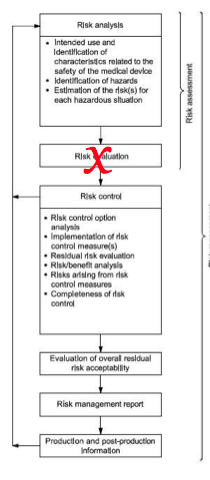How Declaration of Conformity (DoC) templates are created
This article about the declaration of conformity for medical device CE Marking identifies three possible sources for creating a template and includes recommendations for making the transition to the proposed EU Medical Device Regulation (EMDR).
 Current declaration of conformity requirements
Current declaration of conformity requirements
Each of the three “New Approach” Device Directives requires that manufacturers create a Declaration of Conformity (DoC). For the Medical Device Directive (MDD), this requirement is found in Annex II, IV, V, VI, and VII. The “Declaration of Conformity” is part of the title for each of those Annexes. A DoC is required for each CE Marked product family, but the MDD does not guide the format or content. Manufacturers need a controlled template.
Three sources of declaration of conformity examples
There are three possible sources for creating a declaration of conformity template:
- Copy another company’s declaration of conformity
- Authorized Representatives
- Annex III of the proposed European Medical Device Regulations
Most companies are using option number 1—often without knowing it. The problem with this approach is you have no regulatory reference to justify the basis for the content and format of your Declaration.
The second option is to ask your Authorized Representative (AR). The AR is supposed to verify that you have a DoC for each product family and that the company has the required technical documentation for each product family. The AR must provide a DoC for each product they represent to the Competent Authority upon request. Therefore, some ARs provide manufacturers with a template for the DoC to ensure that your DoC meets requirements. This approach gives you a reference of external origin, and you can be sure that the template will meet current requirements.
My new recommendation for Creating A declaration of conformity
Option 3 is my new recommendation for companies. The proposed European Medical Device Regulation (EMDR) was released on September 26, 2012. The proposal provides a prescriptive template for the content of a DoC. This will eventually be required for every DoC. Annex III is only one page long, and there are only ten requirements:
- Name of the Manufacturer and the AR
- A declaration that DoC Issued under Sole Responsibility of Manufacturer
- Unique Device Identifier (UDI)
- Product Name and Catalog Numbers
- Risk Classification
- Declaration Statement of Conformity
- Reference to Harmonized Standards and Common Technical Specifications (CTS)
- Notified Body Name and Number, Description of Conformity Assessment Procedure and Certificate
- Additional Information
- Place and Date of Issue, along with the Name and Function of the Person Signing
Instead of waiting for the final approval of the EMDR, I recommend creating a declaration of conformity (DoC) template now that matches the proposed Annex III (you might want to add this to recommendations for improvement in your next management review).
Brigid Glass is the subject matter expert behind most of the conventions that our consulting firm uses for document templates. As with all of our forms, we assign a document control number (e.g., FRM-001), and the revision is “D1” for the first draft. The template is in table format to facilitate easier review by auditors and your AR. The left column of the table lists each of the required elements, and the right column is where the variable data is entered. Variable fields that are examples are in green font, and the content that does not require changing is in black font. There are some comments to explain how to fill in the variable content, and several items that will change when the proposed regulation is approved are identified. The following harmonized symbols from ISO 15233-1 are used in the template, as well:
Please click here to download the Medical Device Academy’s declaration of conformity (DoC) template.
How Declaration of Conformity (DoC) templates are created Read More »










